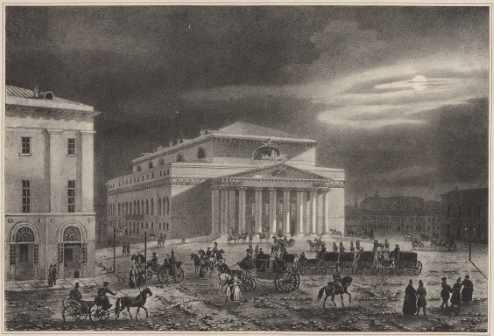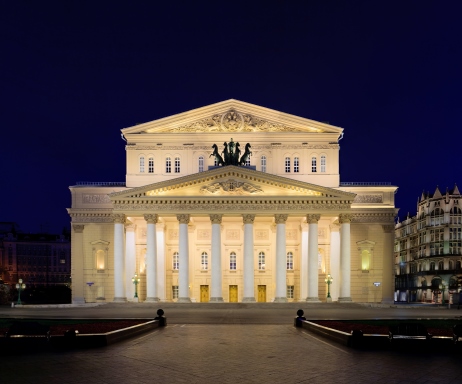Simon Morrison’s new book reviewed by Charlotte Kasner.
It is difficult to know for whom Bolshoi Confidential is intended. It was felt clearly that it needed a rather salacious title and a predictable image of Maya Plisetskaya on the cover, but while some of the later chapters are good on analysis and detail, anyone who buys it expecting secrets to be revealed will wilt with boredom before they have a chance to be disappointed.
Some of the chapter headings are as spicy sounding as that title. A ‘swindling magician’ was apparently routed by Napoleon, ‘Imperialism’ is followed by ‘After the Bolsheviks’ (no, during), while two female dancers get entire chapters to themselves.
Simon Morrison is a professor of music, not a ballet historian. It shows. He also has a gift for stating the obvious. Not even into the first chapter he observes, “As so goes Russia, so goes the Bolshoi.” Given its location, one might expect that it would. The remainder of the introduction concentrates on the recent attack on Sergei Filin, former dancer and director. While hardly a secret, it certainly provides much room for speculation and gossip. One might expect Morrison to eventually discuss it in more detail but it is simply referred to again in the epilogue, without context.
Having survived the rambling introduction, Morrison plunges straight into tedious minutiae, starting with the early days of the theatre that preceded the 19th-century building with which we are familiar, and the machinations behind funding it and providing dancers. As if we didn’t already know, he informs us that intrigue, scandal and corruption are nothing new. Most disappointing, though, is that while he clearly dug out a lot of material, it’s not assembled in a particularly coherent or readable manner.

by Auguste Cadolle.
Photo NYPL
He tells us that a leading dancer was allegedly kicked by her manager as she exited into the wings, informing us that the pre-revolutionary Russian word for ‘kick’ was written with a soft sign in Moscow but not in St Petersburg. Anyone who knows about language, specifically Russian, would not find that surprising. Capital cities often have a louder, harsher mode of speaking (and maybe writing) than the provinces and Moscow (not the capital at the time) was no exception. Russian speakers may or may not know that. Non-Russian speakers wouldn’t care and he doesn’t even bother to inform the reader why.
Next comes a potted review of the Napoleonic invasion. It doesn’t really inform the narrative as far as the Bolshoi Theatre is concerned, neither does it tell us much about the broad facts of Napoleon’s campaign, its impact on Russia and, specifically, Moscow.
Most of the following chapter is devoted to leading dancer, Ekaterina Sankovskaya who lived from 1816-1878. Although she may typify the life of a soloist of the period, she is not particularly well known. One assumes she is so prominently featured at least in part because of the amount of material about her that remains. While her life was not devoid of interest and, indeed, machinations and intrigue, it is not really put into context so doesn’t serve the reader well.
The burning down of the original theatre and the its reconstruction (somewhat shoddily as it turned out) as that with which we are familiar is covered, but it is odd that the building itself is not given more prominence. Neither does Morrison give us any real feel for how it fitted into Moscow society throughout the ages.
The next chapter gallops through Tsarism, the rebuilding occurring at about the same time as the coronation of Alexander II. The repertoire with which we continue to be entranced is developing in this period and is covered reasonably well.

Photo Dmitriy Guryanov
Then the Revolution is suddenly over, but not before we suddenly find ourselves plunged into crude, Cold War analysis of the Bolsheviks. Even Anatoly Lunacharsky is given relatively short shrift. The first Soviet People’s Commissar of Education, also responsible for culture, Lunacharsky was to the fore in persuading Lenin not to demolish the theatre in 1918. Without him, we would not have the Bolshoi. Lenin’s part in preserving much culture that cruder element would have swept away is ignored as is Trotsky’s contribution to literature and literacy.
The following chapter is entitled censorship, as if it had suddenly appeared and the Tsars exercised no control over their subjects whatsoever. Things pick up, though. The writing style appears to take a totally different turn. From here to the end, the analysis is far less crude and the detail much more relevant. It’s almost as if it were written by a different person or sometime after the previous chapters. Morrison is particularly good when it comes to his consideration of Aram Khachaturian, especially Spartacus and its treatment by various choreographers. Similarly, he manages to confine himself to the necessary facts when considering Shostakovich’s unhappy contribution to ballet. One senses that he is on more familiar territory here.
The final chapter focuses on one dancer: Maya Plisetskaya. Morrison justifies this by stating that she “emblematized [sic] the power and might of the Bolshoi ballet in the mid-20th-century;” a statement, incidentally, or maybe not so incidentally, written in a manner typical of the language and style used throughout, and that is teeth-grindingly annoying. The comment is also debatable. As Morrison goes on to prove, she was no fan of Yuri Grigorovich (the feeling was mutual) and she deliberately antagonised the regime, initially being prevented from touring. Although she was later able to mount her own productions (as was fellow soloist Vladimir Vasiliev), she was hardly representative, even of other soloists.

Photo kremlin.ru
Initially, it seems that Morrison is not going to mention Grigorovich at all, which considering that he ran the Bolshoi for longer than any other ballet master and choreographer to date, is something of an omission. Whilst he is not completely ignored, we learn nothing that is not easily obtainable from a broad understanding, and it is astonishing that his era is not given a chapter to itself, backed up by some hefty research.
Morrison is rightly critical of Maya Mikhailovna who carping criticisms and complete lack of self-analysis make her autobiography hard reading.
Having made a huge thing of the Sergei Filin scandal initially, Morrison then pretty much stops with the fall of the Berlin Wall, although he does cover the re-opening of the Bolshoi after extensive renovations in 2011. He treads on eggshells when mentioning Medvedev and Putin and makes no attempt to research the feelings of dancers with whom he could have attempted to engage.
While it has its moments, Bolshoi Confidential is a book in desperate need of a good editor. Most disappointing, especially given that title, is that Morrison doesn’t actually reveal anything confidential. Certainly, contemporary secrets are safe from him. Covering such a broad time period obviously presents challenges and decisions about what to put in and what to leave out. It is a very uneven, incomplete history of the building and the ballet company, though. At 423 pages plus copious notes, it is a heft read but while it may have interest for the casual reader, it will not enhance any academic studies.
Bolshoi Confidential
Author: Simon Morrison
Publisher: Fourth Estate
Hardback, 512 pages
ISBN: 978-0871402967
List price: £20

